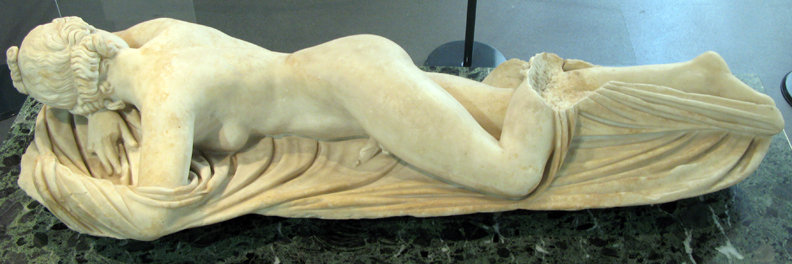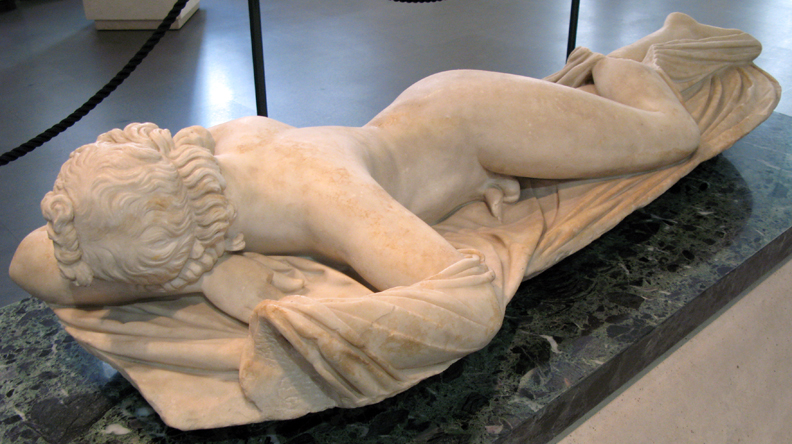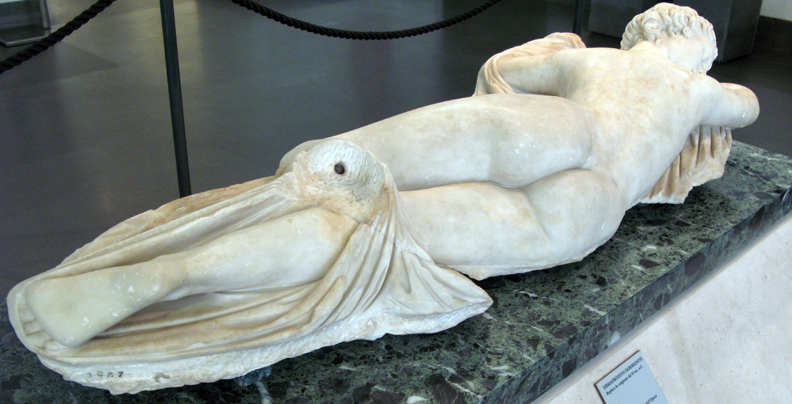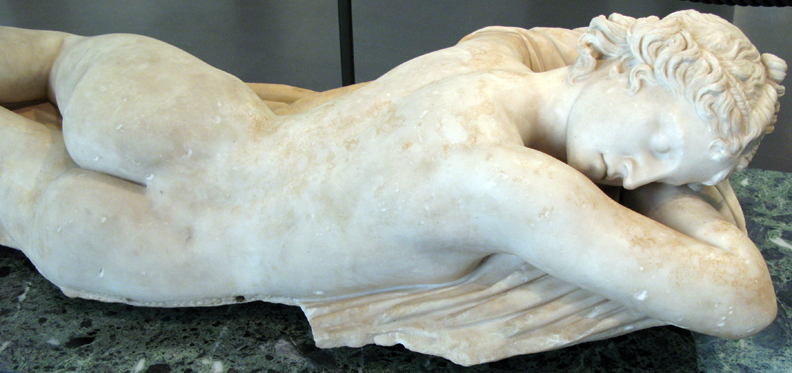I have also observed in a temperate light works carved most perfectly and executed with the greatest art and diligence.
Among which, I saw in Rome in the 440th Olympiad a statue of an hermaphrodite the size of a thirteen-year-old girl, which was wrought with wonderful skill.
It had been discovered at that time in a sewer about eight braccia below the ground. The sculpture lay at the level of the vault of the sewer and was covered with earth up to the surface of the street.
While the area was being cleared — it was above St. Celsus — a sculptor stopped by, had the statue hauled out, and brought to Santa Cecilia in Trastevere, where he was working at the monument of a cardinal — he had removed some marble from it — the better to transport it to our city.
As for the ancient statue, our tongues cannot express the skill, the art, the mastery, the perfection with which it was done.
The figure was represented as lying upon spaded soil. On this soil a linen sheet was spread.
The figure lay upon this sheet and was uncovered so as to exhibit both the virile and the feminine parts.
The arms rested on the ground and were folded. The hands were joined.
One of the legs was stretched and had caught the sheet with the big toe. In this act of pulling the sheet it showed wonderful art.
The head was missing, but the rest was complete. This statue had very many refinements, which the eye could not perceive, but the hand could detect by touch.


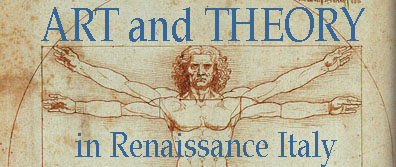
 SCHEDULE
SCHEDULE  REQUIREMENTS
REQUIREMENTS  ART HISTORY GUIDE
ART HISTORY GUIDE

